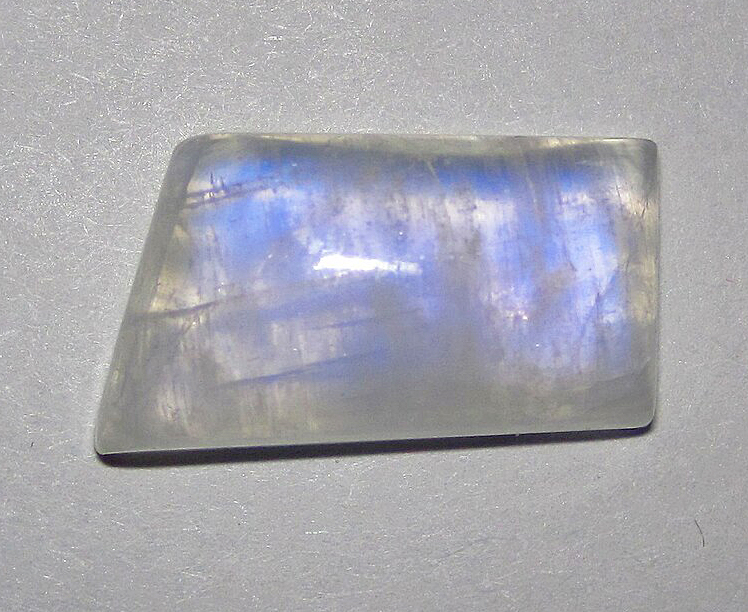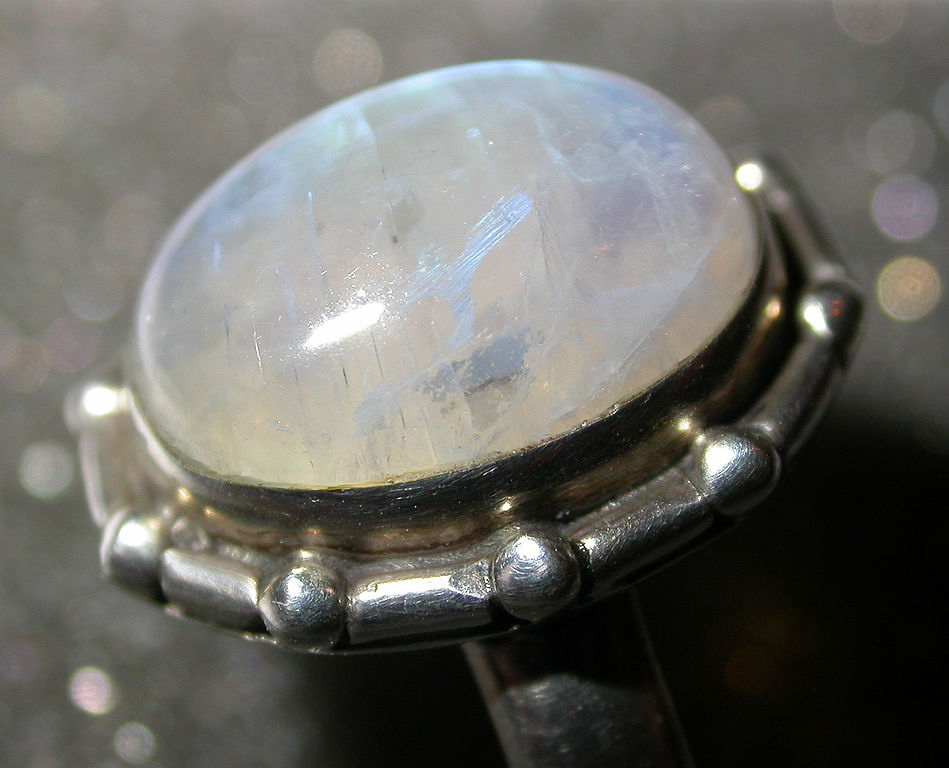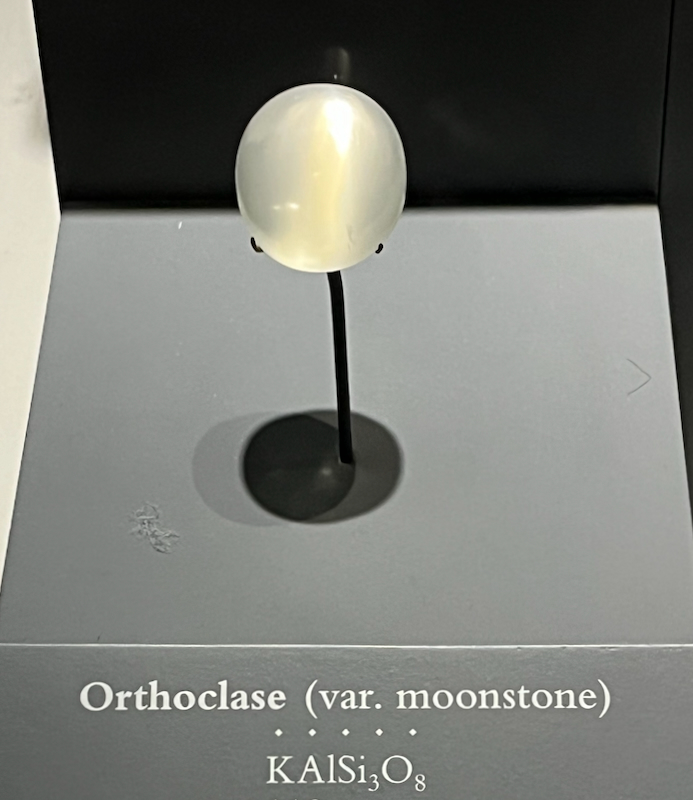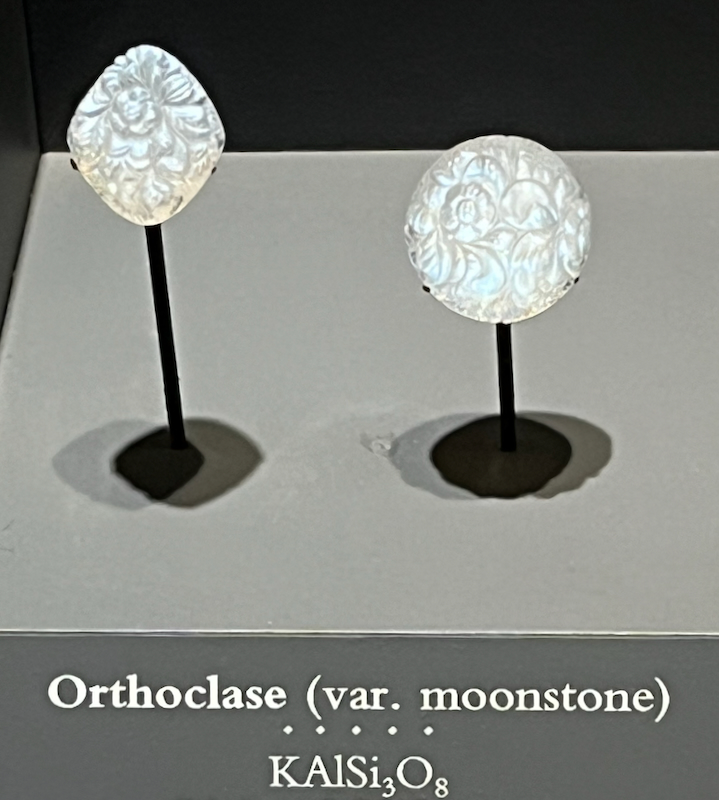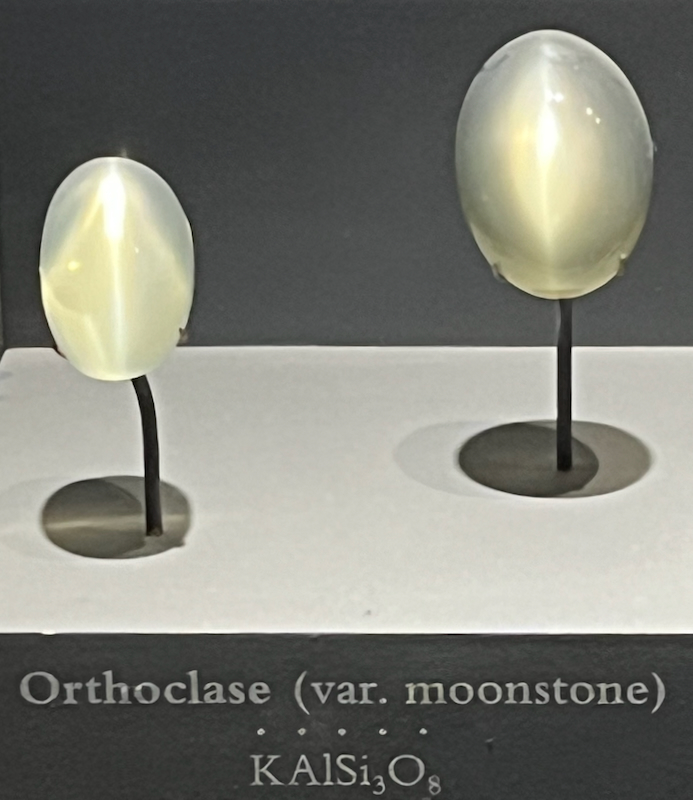Moonstone
Although feldspar is the most common mineral, it can still be special. Because it occurs so often in so many places, it can occur in different varieties—labradorite, peristerite, sunstone, moonstone, etc.—that can be quite beautiful, along with its very plain-looking types. Moonstone’s name comes from its moonlike color—bluish white—and the way it glows. Like a pearl, it may seem to glow from the inside, an effect mineralogists call “adularescence” in the case of moonstone. It has many thin layers inside of it, and when light reflects off them, it’s bent and scattered in a way that our eyes see as a soft, pearly glow. It’s very popular for making jewelry, and when you polish it, it can sometimes have a cat’s eye effect, where a glowing line in the center, like the pupil of a cat’s eye, seems to stare at you as you tilt the stone different ways. Moonstone is the Florida State Gem, but not because you can find moonstone there; it was picked as a tribute to rockets from the United States that landed on the moon, since one of NASA’s main bases is in Florida.
| Formula | Group or Type | Shape | Hardness | Specific Gravity | Streak | Luster |
|---|---|---|---|---|---|---|
| K(AlSi3O8) | Feldspar | Monoclinic | 6–6.5 | 2.56–2.62 | White | Pearly |
